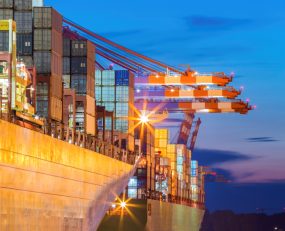
The logistics infrastructure of South East Asia continues to develop, even if its progress is politically controversial.
For example, Port Klang, in Malaysia, is embarking on its plan to double container handling capacity from 14m TEUs at present, to 27m TEUs in 15 years time and increase the number of container terminals from 9 to 17. Already the port, which is the second largest in South East Asia, is augmenting its position at the head of the Malacca Strait with a rail link that will cross the Malay peninsula, offering a direct connection to the Gulf of Thailand.
In an interview this week with the Nikkei Asia newspaper, Ruben emir Gnanlingam, the CEO of Westports, which is the terminal operator that holds the concession for Port Klang, commented that a key driver of the growth of such infrastructure will be the “re-alignment” of supply chains way from China; “we believe the re-alignment will be focussed on South East Asia, so the focus here is to expand and make sure we have the capacity for growth”.
Malaysia’s development is in parallel, or possibly rivalling, the Chumphon-Ranong Land Bridge project presently being discussed in Thailand. This port and rail project aspires to link the east and west coasts of southern Thailand, offering what some in Thailand view as a transformative change for South East Asian trade. The legislation for the project has just been passed in the Thai parliament. The Government encountered opposition from both people concerned at the effects of such a project on the landscape of southern Thailand and from existing port operators. The date of completion is supposed to be 2030, although this will be just the first of a number of phases of development.
In both cases, the countries concerned are trying to improve their position on the international trade routes by creating alternative logistics solutions. Both Malaysia and Thailand are aspiring to offer shippers the option to bypass Singapore with faster, if not cheaper routes. The benefit would not just be the growth of ports in their respective countries but also the opportunity to attract outsourced assembly activities.
Author: Thomas Cullen
Source: Ti Insight
Supply chain strategists can use GSCi – Ti’s online data platform – to identify opportunities for growth, support strategic decisions, help them stay abreast of industry trends and development, as well as understand future impacts on the industry.
Visit GSCI subscription to sign up today or contact Michael Clover for a free demonstration: [email protected] | +44 (0) 1666 519907